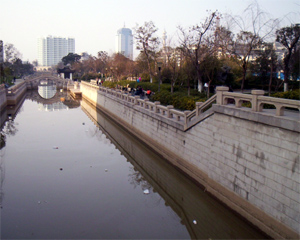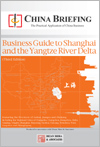Changzhou Blooms as Investment Moves West Out of Shanghai
 Sept. 30 – Changzhou, a second-tier city nestled between Nanjing and Suzhou on China’s east coast, is beginning to bloom into a bustling manufacturing hub. Two hours by train from Shanghai, the city offers foreign investors competitive skilled labor, reasonable land costs, and a foreign-investor-friendly local government offering manufacturers who want to expand or relocate in China a more affordable alternative than Shanghai.
Sept. 30 – Changzhou, a second-tier city nestled between Nanjing and Suzhou on China’s east coast, is beginning to bloom into a bustling manufacturing hub. Two hours by train from Shanghai, the city offers foreign investors competitive skilled labor, reasonable land costs, and a foreign-investor-friendly local government offering manufacturers who want to expand or relocate in China a more affordable alternative than Shanghai.
In 2007, the booming city boasted a GDP of US$25.8 billion and a GDP per capita of over US$7,000. Changzhou’s pillar industries include machinery, electronics, information technology, renewable energy, advanced materials and bio-pharmaceuticals. Machinery is this manufacturing city’s primary industry. Changzhou is an important base for rail and metro equipment, power transmission, distribution equipment as well as agricultural and construction equipment.
The main industries in Changzhou are power, engineering machinery, automobile, motorcycles, power transmission equipment, electronics, new-style textile and garments. The industrial production value in 2007 was RMB524.33 billion, an increase of 24 percent from the previous year.
The city is home to the Changzhou China Bus Group, the largest bus manufacturer in China with an annual production capacity of 3,000 buses and 5,000 bus chassis. Its worldwide exports take up more than 20 percent of the market share and the company.
There is also a large amount of foreign investment in Changzhou, 47 Fortune 500 companies have set up their presence in Changzhou, including general Electric, Bosch, Mitsubishi, Denso, Toshiba, Kohler, Goodyear and MAN. 6,000 foreign enterprises from 98 countries and regions have invested in the city boosting accumulated foreign capital to US$12 billion.
With an ambition to grow into one of China’s largest manufacturing hubs, the Changzhou government has grand plans of attracting large scale projects, billions in foreign investment, high-technology and building world class infrastructure and transportation facilities.
In a bid to move up the value chain and offer companies a better technical playing field, the Changzhou government set up the Changzhou Software Park. Started in 1999, the CSP, currently houses 200 companies from China, Taiwan and Japan. Mostly small and medium companies, focusing on the finance, manufacturing, chemical, telecom and oil and gas sectors, have their base in the software park.
In order to attract foreign investment, the CSP offers enterprises free office space in their first year, lowered office rent in the next few years and government support in setting up and filing taxes. Also, to combat the problem of low skilled labor, CSP works together with NIIT, an Indian IT training company and local and provincial level universities to provide companies with skilled local talent.
 For more information on Changzhou, please check out the forthcoming China Briefing Regional Guide to Shanghai and the Yangtze River Delta which will be available following the October national holiday, priced at US$25 plus p&p. The book details Shanghai and the provinces of Anhui, Jiangsu and Zhenjiang as well as the cities of Changshu, Changzhou, Hangzhou, Hefei, Nanjing, Ningbo, Shanghai, Shaoxing, Suzhou, Taicang, Wenzhou, Wuxi, Yangzhou and Zhangjiagang. Pre-publication orders can be made through sales@china-briefing.com.
For more information on Changzhou, please check out the forthcoming China Briefing Regional Guide to Shanghai and the Yangtze River Delta which will be available following the October national holiday, priced at US$25 plus p&p. The book details Shanghai and the provinces of Anhui, Jiangsu and Zhenjiang as well as the cities of Changshu, Changzhou, Hangzhou, Hefei, Nanjing, Ningbo, Shanghai, Shaoxing, Suzhou, Taicang, Wenzhou, Wuxi, Yangzhou and Zhangjiagang. Pre-publication orders can be made through sales@china-briefing.com.
Inquiries or assistance with investment in Changzhou can be directed to Dezan Shira & Associates at info@dezshira.com.
- Previous Article Klaus Schwab: Despite U.S. Economic Issues, China Growth to be Maintained
- Next Article Why China Will Boom During the 2009 Great American Depression









